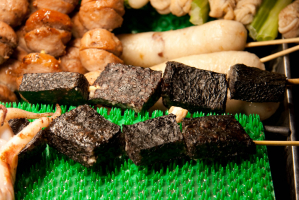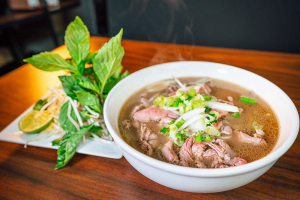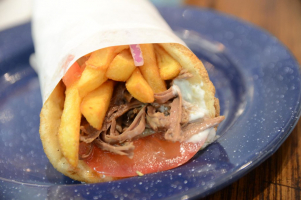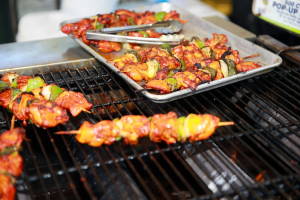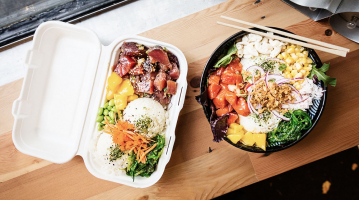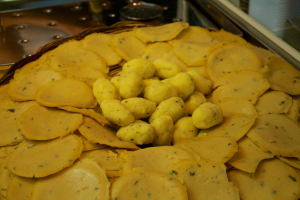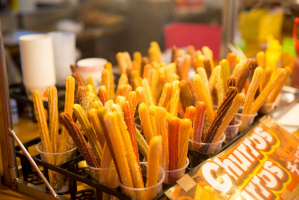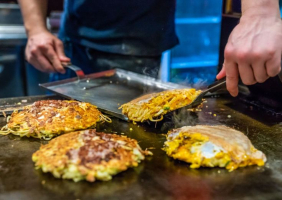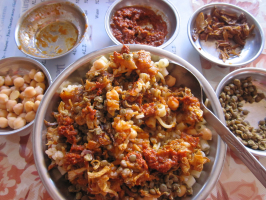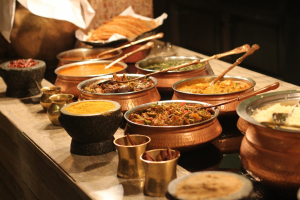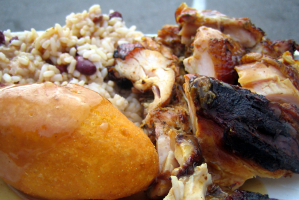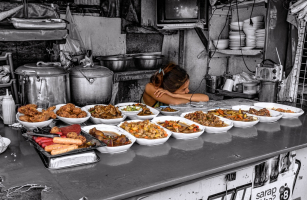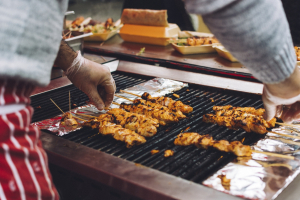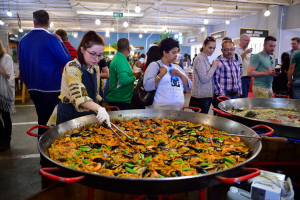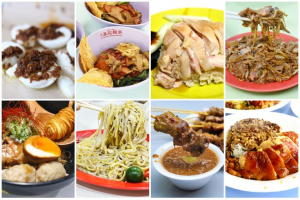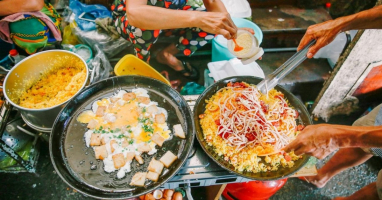Top 14 Most Popular Bengali Street Foods
Budapest is not just renowned for its stunning architecture and rich history but also for its delectable street food scene. From mouthwatering traditional ... read more...dishes to innovative culinary creations, the city's streets are a food lover's paradise. Join us on a gastronomic journey as we explore the top 14 best street foods in Budapest, offering a taste of Hungary's diverse and delicious culinary culture.
-
Ghugni is a popular and savory Indian dish that hails from the region of Bengal but is enjoyed across the country. This delightful and hearty dish features dried yellow peas, known as "ghugni" peas, which are simmered and cooked to perfection, resulting in a flavorful and satisfying concoction.
The preparation of ghugni begins with soaking the dried yellow peas, often overnight, to rehydrate them. These peas are boiled until tender, creating a soft yet slightly toothsome texture. Once cooked, they serve as the base for the dish.
What truly elevates Ghugni is the aromatic and flavorful masala, a blend of spices that infuse the peas with their enticing taste. Common spices used include cumin, coriander, turmeric, ginger, and chili, skillfully combined to create a rich, spicy, and aromatic seasoning.
Ghugni is versatile, and the choice of additional ingredients can vary. It's often garnished with toppings such as finely chopped onions, fresh cilantro, and a sprinkle of tangy tamarind or lemon juice, offering a medley of textures and tastes. One of the most popular ways to enjoy Ghugni is as a street food snack. The crisp, airy puri complements the spiced peas perfectly, resulting in a combination that's both satisfying and full of contrasting textures.
Ghugni is not only a beloved street food but also a common dish in Bengali households enjoyed as a hearty and wholesome meal. Its rich flavors and protein-packed peas make it a nourishing option, particularly for vegetarians.
Ghugni is a delightful, flavorful, and versatile dish that captures the essence of Indian cuisine. Its perfect blend of spices, tender peas, and choice of toppings make it a sensory delight for anyone who craves the diverse and delicious flavors of India.
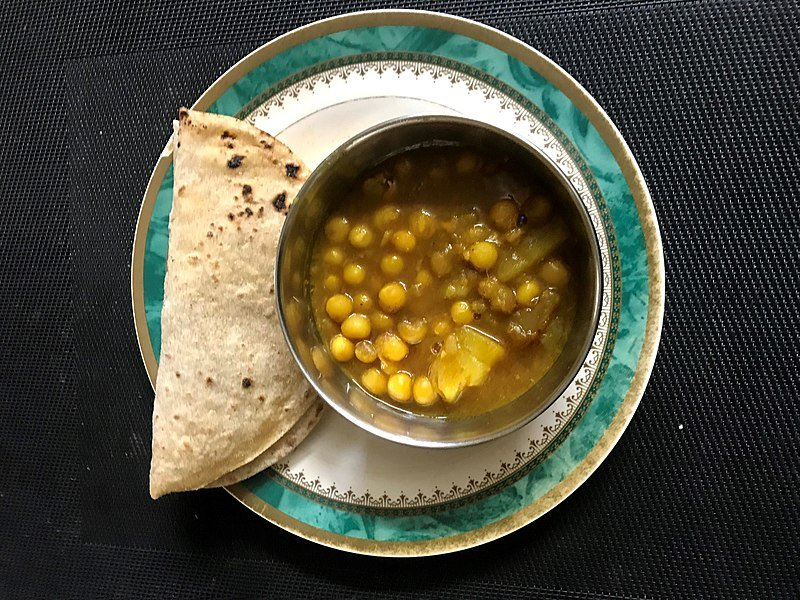
Screenshot of https://commons.wikimedia.org/wiki/File:Roti_ghugni-MB27.jpg Video by Rajshri Food -
Aloo chops, essentially deep-fried potato patties, are seasoned with aromatic spices and herbs. The combination of flavors, including cumin, coriander, and chili, creates a tantalizing blend of spiciness and earthy notes that appeals to the palate.
Aloo Chop provides a comforting and familiar taste, making it a go-to snack for many. The warm, soft interior of the potato patty contrasts beautifully with the crisp outer layer, evoking a sense of nostalgia and satisfaction.
Aloo Chop is a vegetarian dish, which makes it accessible to a wide range of diners, including those who abstain from meat. Its heartiness and bold flavors can even satisfy carnivores, making it a versatile street food option. While the classic Aloo Chop features a spiced potato filling, there are numerous regional variations.
Aloo Chop is an inexpensive street food option, making it accessible to people from various socioeconomic backgrounds. Its affordability adds to its popularity and widespread consumption. Street food is about convenience, and Aloo Chop fits the bill perfectly. It's a handheld snack that requires no utensils, making it ideal for those looking for a quick, delicious bite while on the move. Aloo Chop is enjoyed across different regions of India, and each area may have its own unique take on the dish, further enhancing its appeal.
Aloo Chop is often served with tangy tamarind or green chutney, enhancing its flavor profile and offering diners a delightful balance of tastes. Aloo Chop's popularity stems from its harmonious blend of flavors, affordability, and accessibility. Its versatility, suitability for vegetarians, and capacity to evoke a sense of comfort and nostalgia make it an attractive street food choice for diners in India and beyond.
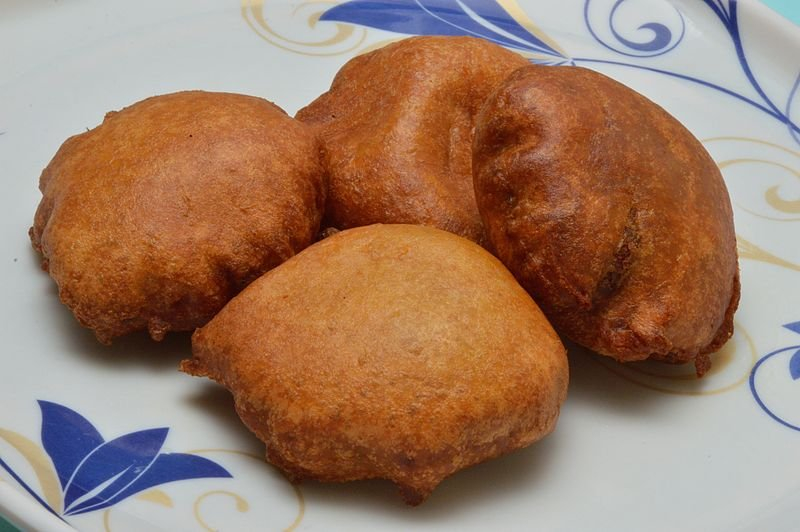
Screenshot of https://commons.wikimedia.org/wiki/File:Aloo_Fritters_-_Howrah_2015-04-26_8541.JPG Video by NishaMadhulika -
Peyaji, a delectable and popular snack in Bengali cuisine, has a history of formation and development deeply rooted in the culinary traditions of Bangladesh and the Indian state of West Bengal. This humble yet flavorful dish has evolved to become a beloved street food and a staple in Bengali households.
The origins of peyaji can be traced back to the traditional Bengali snack known as "onion bhaji" or "pakora." Early iterations of peyaji were simple fritters made by batter-coating sliced onions and sometimes incorporating various spices. These fritters were initially enjoyed in Bengali homes as a tea-time or evening snack. Over time, the dish's popularity grew, and street vendors across Bangladesh and West Bengal began offering peyaji to a broader audience.
What sets peyaji apart is the incorporation of regional flavors and spices. The batter for peyaji typically includes besan (gram flour) combined with various aromatic spices like cumin, green chilies, and coriander. These ingredients contribute to the dish's distinct flavor, making it a unique and cherished part of Bengali cuisine.
The dish's development continued as it became an integral part of Bengali culinary culture. Peyaji is commonly served during monsoons and as an accompaniment to various Bengali dishes. Its presence in street food markets and local food stalls has solidified its status as a quintessential Bengali snack.
Peyaji stands as a testament to the enduring appeal of regional street food and the ability of simple, flavorful dishes to capture the hearts and taste buds of both locals and visitors.
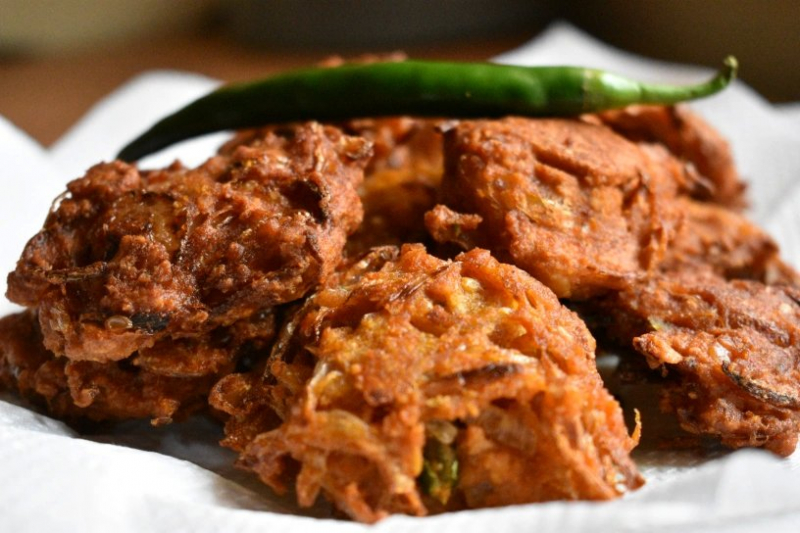
Screenshot of https://dishofdelight.wordpress.com/2019/02/17/peyaji-onion-pakora/ Video by Mitar Paakshala -
Another popular Bengali street food is dragon chicken. This delectable and spicy street food has found its way to the bustling streets of West Bengal, India, offering a compelling fusion of Chinese and Bengali flavors.
Dragon Chicken is a prime example of the fusion of Chinese and Indian culinary traditions, adapted to suit the Bengali palate. The dish typically features tender chicken pieces stir-fried to perfection and smothered in a rich, spicy sauce. The addition of vibrant vegetables like bell peppers, onions, and green chilies provides a medley of colors, textures, and flavors that make Dragon Chicken a visual and taste sensation.
Dragon Chicken features a robust seasoning. It combines the bold and spicy flavors of Indian cuisine with the wok-frying techniques borrowed from Chinese cooking. The marriage of these two culinary worlds results in fiery, aromatic, and lip-smacking street food that resonates with the taste buds of locals and visitors alike.
Dragon Chicken's journey to the streets of West Bengal reflects the region's penchant for bold and spicy flavors. As street vendors and local eateries continue to innovate and diversify their menus, this fusion dish has become a popular choice.
Whether enjoyed as a quick snack or a fulfilling meal, Dragon Chicken showcases the evolving culinary landscape of West Bengal and its embrace of global influences.
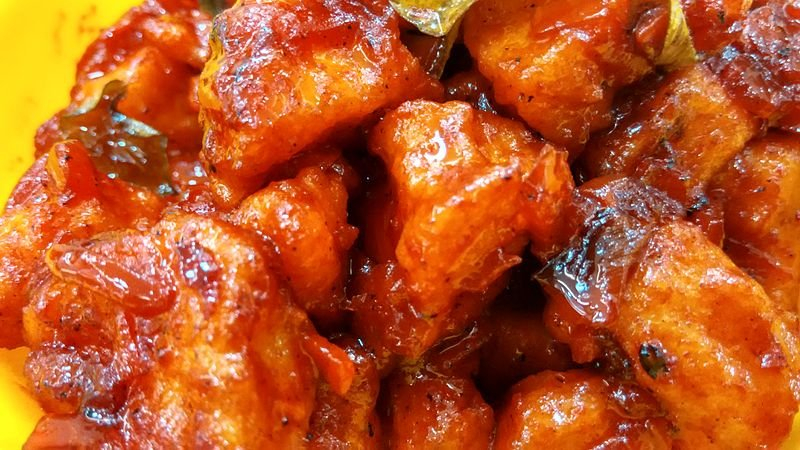
Screenshot of https://commons.wikimedia.org/wiki/File:Dragon_idli_of_Salem.jpg Video by Spice Eats -
Phuchka offers a captivating multisensory experience. The sound of the hollow, crispy shells filled with spicy, tangy water, the aroma of spices and fresh herbs, and the burst of flavors in the mouth create a symphony of sensations that tourists find irresistible. The combination of spicy, tangy, and sweet flavors in a single bite is a culinary adventure that tourists love. Phuchka bursts with an explosion of tastes that tantalize the taste buds.
Tourists can tailor their Phuchka to suit their preferences by adjusting the spice levels and the fillings. This versatility allows for a personalized culinary experience. Phuchka vendors often prepare the snack right in front of customers, ensuring its freshness and hygiene.
Enjoying phuchka from street vendors adds to the charm of the experience. Trying Phuchka provides tourists with a direct link to Indian culture and traditions. It's a reminder that food is an integral part of any culture, and sharing a meal is a way to connect with locals and their way of life. The colorful presentation and the moment of anticipation when biting into a phuchka make it a favorite subject for social media posts.
Phuchka's sensory experience, a burst of flavors, customization, freshness, affordability, and cultural connection all contribute to its tourist attraction. It's a delicious and unforgettable introduction to Indian street food and a sensory journey that leaves a lasting impression on visitors exploring the vibrant culinary landscape of India.
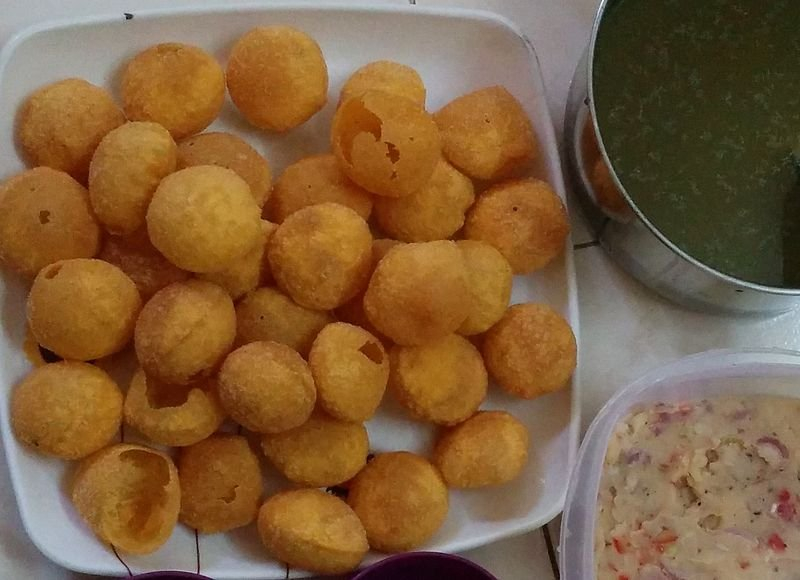
Screenshot of https://commons.wikimedia.org/wiki/File:Phuchka_-_Bengali_Style_Panipuri.jpg Video by Banglar Rannaghor -
Egg rolls, a delicious and popular street food, have made their way to the vibrant streets of West Bengal, India, offering a delightful fusion of Chinese-inspired flavors with a Bengali twist. These savory rolls, known as "Kathi Rolls" locally, have become a cherished part of the Bengali street food scene, showcasing the region's culinary diversity.
In West Bengal, egg rolls, or Kathi rolls, typically consist of a soft, flaky paratha (Indian flatbread) wrapped around a flavorful filling. The filling often includes succulent pieces of skewered and grilled chicken or mutton marinated with aromatic spices, fresh vegetables, chutneys, and a generous egg drizzle. The result is a portable, flavorful delight perfect for on-the-go snacking.
What sets Bengali egg rolls apart is the creative use of local ingredients and flavors. While the concept draws inspiration from Chinese egg rolls, Bengali Kathi Rolls infuse spices and chutneys that reflect the region's bold and tangy tastes.
Egg rolls, or Kathi rolls, have quickly become a beloved street food across West Bengal. Whether you're strolling through the bustling markets of Kolkata or exploring the vibrant streets of Darjeeling, you're likely to encounter these delightful rolls, which offer a taste of Bengali culinary ingenuity and the ever-evolving nature of street food.
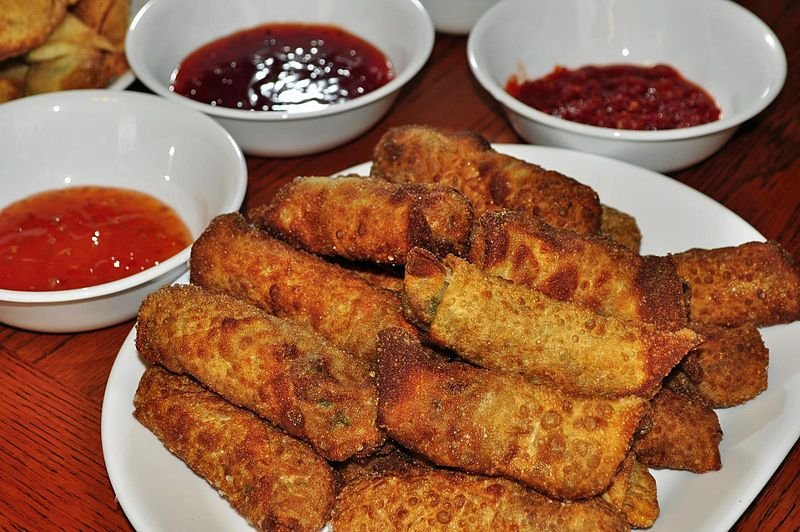
Screenshot of https://commons.wikimedia.org/wiki/File:Egg_rolls_%285445621283%29.jpg Video by Munchies -
Jhalmuri, a beloved street food in Bengal, has a rich and evolving history that mirrors the changing tastes and cultural dynamics of the region. This spicy and tangy snack, composed of puffed rice, spices, and various ingredients, has deep roots in Bengali culinary tradition. Jhalmuri's origins can be traced back to the late 19th century when it was introduced as a popular street food snack. It was initially a straightforward mixture of puffed rice, mustard oil, spices, and a few chopped ingredients.
One significant shift in the evolution of Jhalmuri is the inclusion of a wider range of ingredients. While the basic recipe remains intact, variations of Jhalmuri now feature chopped vegetables like cucumbers, tomatoes, and green chilies, as well as ingredients such as boiled peanuts, fried lentil noodles (sev), and roasted gram (bhujia). These additions add both flavor and texture to the dish, making it more satisfying and nutritious.
The condiments and spices used in Jhalmuri have also evolved. While traditional recipes relied on mustard oil and a simple mix of spices, modern versions may include tamarind chutney, chaat masala, and even soy sauce, reflecting the influence of global flavors on Bengali street food. Jhalmuri's evolution is not only about taste but also its cultural significance.
The evolution of Jhalmuri illustrates how street food adapts and thrives in response to changing times and influences. It continues to be a beloved snack, loved not only for its spicy and tangy flavors but also for its ability to connect people and generations, bridging the past and the present in the bustling streets of Bengal.
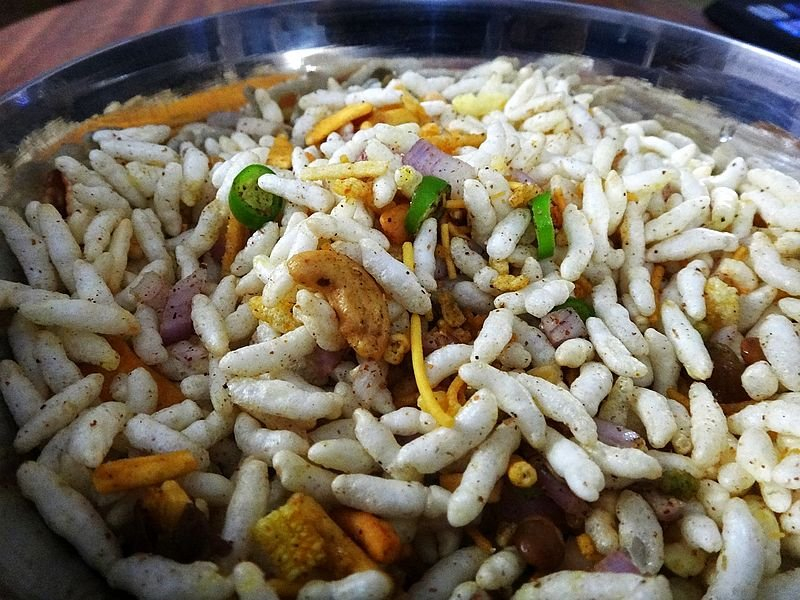
Screenshot of https://commons.wikimedia.org/wiki/File:Jhalmuri.jpg Video by Rajshri Food -
Shingara, often spelled "Samosa" in other regions, is a beloved and iconic snack with delightful taste buds across the Indian subcontinent and beyond. This delectable dish is a testament to the culinary artistry and cultural diversity of the region.
Shingara consists of a simple yet tantalizing combination: a crispy, deep-fried pastry shell filled with a flavorful mixture. The pastry shell is traditionally made from a mixture of all-purpose flour, water, and a touch of oil or ghee, which is kneaded to create a smooth and pliable dough. It is then rolled out into thin sheets, cut into triangles or semi-circles, and folded around the filling to form its distinctive shape. The filling, which is the heart of the Shingara, varies in composition.
Shingara holds cultural significance and is a cherished snack in various parts of South Asia. It is a staple at festivals and celebrations and as a tea-time accompaniment. Its portability and satisfying combination of crispy exterior and savory interior have made it a popular street food, not only in India but also in neighboring countries like Bangladesh and Pakistan.
Shingara reflects the shared love for its delightful taste and the joy it brings to countless people as a quick, flavorful, and easily accessible snack. Its versatility has even inspired numerous regional variations, demonstrating how a single dish can adapt to local tastes while preserving the essence of its simple yet exquisite charm.
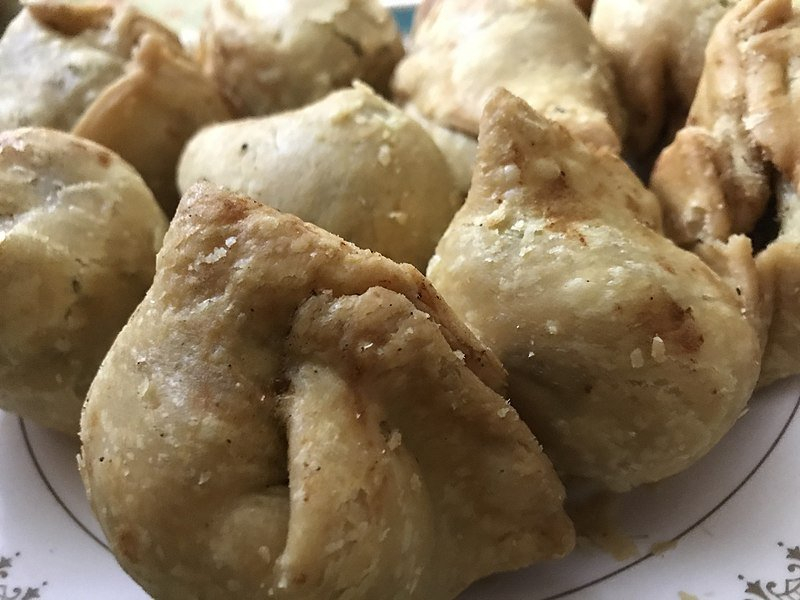
Screenshot of https://commons.wikimedia.org/wiki/File:Shingara_01.jpg Video by Tifiin Box -
Chanar Jilipi is a delectable Bengali sweet that has become a beloved street food in West Bengal, India. Its origin can be traced to the rich culinary traditions of Bengal, which have a deep-rooted connection with dairy products and sweets. The history of Chanar Jilipi goes back to traditional Bengali sweets made from chhena (a type of fresh cheese) and sugar syrup.
As for Chanar Jilipi, it can be considered an evolution of the more traditional Jalebi, a sweet commonly found in many parts of India. Jalebi is made by deep-frying a wheat flour batter in circular shapes and then soaking it in sugar syrup. Chanar Jilipi, on the other hand, takes a Bengali twist by using chhena in the batter, giving it a unique texture and flavor.
The appearance of Chanar Jilipi on Bengali streets likely occurred as a creative variation of Jalebi to cater to local tastes. This adaptation allowed for incorporating Bengali dairy traditions into a popular Indian sweet. Using chhena in the batter not only imparts a distinct taste but also enhances the sweet's texture, making it more appealing to the Bengali palate.
Over time, Chanar Jilipi gained popularity as a street food due to its irresistible taste and ease of preparation. It can now be found in sweet shops and street stalls across West Bengal, where vendors skillfully deep-fry the chhena-based batter, soak the golden spirals in fragrant sugar syrup, and serve them hot and fresh.
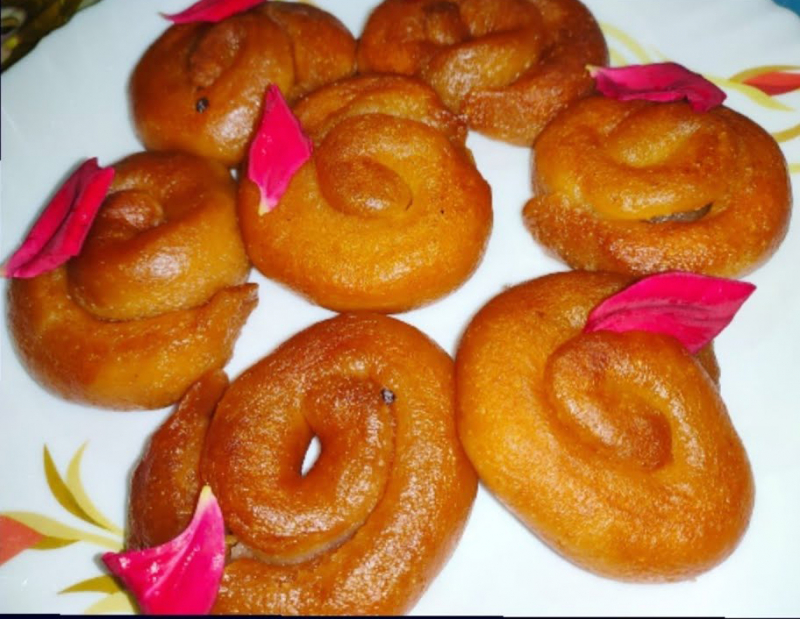
Screenshot of https://www.rasoirani.com/7-mouth-watering-bengali-sweets-you-must-taste/chanar-jilipi/ Video by Tanhir Paakshala -
Cha, also known as chai, is a delightful and essential part of Kolkata's culinary culture. This popular beverage is more than just a simple cup of tea; it's a cherished tradition that reflects the heart and soul of the city.
Cha is brewed using black tea leaves and a unique blend of spices, primarily cardamom, cinnamon, and cloves. The tea is boiled with milk and sugar, creating a harmonious concoction of flavors. What sets Bengali Cha apart is the preparation method, known as "pulling" or "dipping," where the tea is repeatedly poured from one container to another, creating a frothy and aromatic brew.
Street vendors and small tea stalls, locally referred to "tapris," are the heartbeat of this street food culture. These charming nooks can be found on nearly every street corner in Kolkata, offering a cozy atmosphere where people gather to chat, relax, and savor the flavors of cha.
Cha is often accompanied by snacks like samosas, pakoras, or pithas (rice cakes), further elevating the experience. The aromatic tea and these delectable accompaniments provide a tantalizing burst of flavors that Bengalis cherish. What makes China truly unique is its ability to transcend social and economic boundaries.

Screenshot of https://www.needpix.com/photo/download/468197/chai-tea-tea-cup-coffee-cup-tea-with-milk-free-pictures-free-photos-free-images-royalty-free Video by Banglar Rannaghor -
Beguni, a popular Bengali street food, consists of slices of brinjal (eggplant) coated in a spiced gram flour batter and deep-fried to golden perfection. It's not just a snack; it's a culinary experience deeply ingrained in Bengali culture.
Beguni stalls are a common sight on the streets of Kolkata and beyond. Locals and visitors gather around these stalls to enjoy the hot and crispy delicacy. It's a communal experience where people from different backgrounds gather to relish the flavors, share conversations, and create memories.
The culture of enjoying Beguni is not limited to age or social status. It transcends boundaries, and everyone, from children to the elderly, partakes in this street food delight. It's a quick and affordable treat that satisfies the taste buds of the masses. Beguni is often paired with a cup of hot, spiced tea, creating a perfect harmony of flavors.
This cultural tradition reflects the essence of Bengali street food culture: the joy of indulging in simple yet flavorful snacks, the warmth of communal bonding, and the celebration of the region's rich culinary heritage. Beguni is more than just a fried snack; it's a taste of Bengal's vibrant street food culture and a reminder of the diverse and captivating flavors that grace its streets.
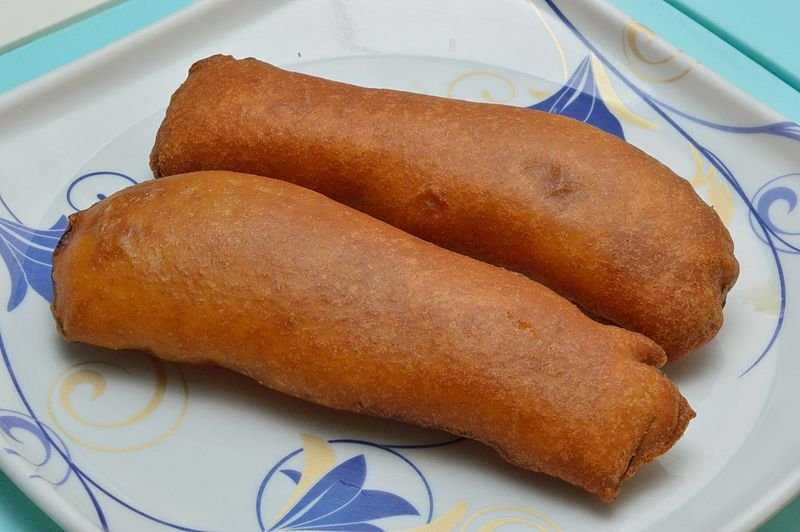
Screenshot of https://commons.wikimedia.org/wiki/File:Brinjal_Fritters_-_Howrah_2015-04-26_8535.JPG Video by Spice Bangla -
Paratha, a popular flatbread in the Indian subcontinent, has a long and storied history that dates back centuries. Its birth can be traced to the Indian subcontinent, where it has evolved into a diverse and beloved culinary tradition.
The term "paratha" is derived from the amalgamation of two Hindi words: "parat," meaning layers, and "atta," meaning dough. This name aptly describes the unique characteristic of parathas—layers of dough created through a specific process of rolling and folding. The earliest forms of parathas were likely simple, unleavened bread made from whole wheat flour.
Parathas are often associated with North Indian cuisine, particularly in regions like Punjab, where they became a staple food due to their versatility and satiety. They could be stuffed with various fillings, from vegetables to minced meat, enhancing their taste and nutritional value.
Today, parathas come in numerous regional variations and fillings, including aloo paratha (potato-filled), gobi paratha (cauliflower-filled), and paneer paratha (cottage cheese-filled), to name a few. They are enjoyed throughout the Indian subcontinent and have gained international recognition.
Parathas are not only a delicious and fulfilling food but also a cultural symbol of shared meals and hospitality. Whether served with pickles, yogurt, chutneys, or a side of vegetables, they remain a cherished part of Indian cuisine, carrying the history and evolution of a culinary tradition that spans centuries.
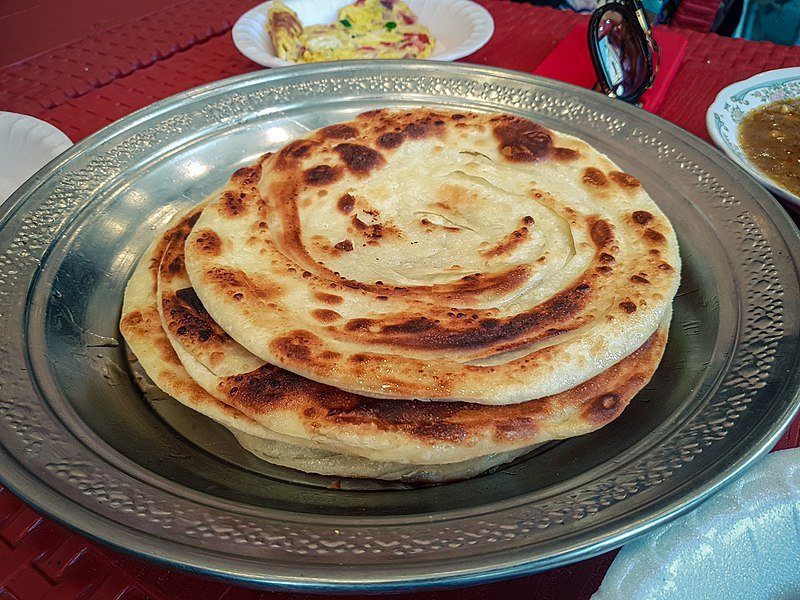
Screenshot of https://commons.wikimedia.org/wiki/File:Paratha_is_a_dough_fried_flatbread_of_India_and_Pakistan.jpg Video by Munchies -
Kathi rolls, a popular street food from India, hold a universal appeal that transcends borders and cultures. These delicious handheld delights are essentially wraps filled with mouthwatering ingredients, typically a combination of grilled or sautéed meats, vegetables, and a medley of flavorful sauces. Here's why kathi rolls have such widespread and enduring allure.
Kathi rolls are a delightful fusion of flavors and textures. They marry the rich, spiced meats and vegetables of Indian cuisine with the convenience of a handheld wrap. This combination creates a tantalizing taste experience that is hard to resist. Kathi rolls are incredibly versatile. They can be customized to suit individual preferences, making them a favorite among both meat lovers and vegetarians.
The convenience of a Kathi roll cannot be overstated. These portable packages of flavor are ideal for people on the go. Whether it's a quick lunch, a satisfying snack, or even a late-night indulgence, Kathi rolls are a convenient choice. Kathi rolls have a rich history, dating back to Kolkata in the early 20th century.
Kathi rolls have found admirers around the world thanks to their irresistible taste. They've been embraced by food enthusiasts from New York to London, and their appeal continues to spread globally. Kathi rolls are a delectable combination of flavors, versatility, and convenience. Their ability to cater to diverse palates and enduring global popularity makes them an irresistible and beloved street food.
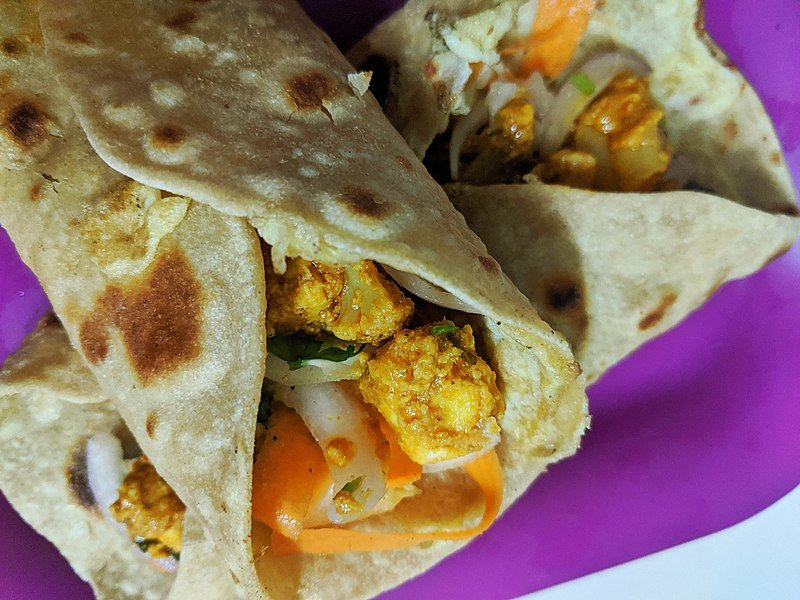
Screenshot of https://commons.wikimedia.org/wiki/File:Paneer_kathi_roll_homemade.jpg Video by Your Food Lab -
Steamed momos, a beloved street food and staple of Asian cuisine, have captured the hearts and palates of people worldwide. These delicate and delectable dumplings, often associated with Tibetan, Nepali, and other regional cuisines, offer a unique and satisfying culinary experience.
Steamed momos consist of two key components: the dough and the filling. The dough is made from a simple mixture of flour, water, and a pinch of salt. It is kneaded to a silky-smooth consistency and rolled into thin, round wrappers. The filling, on the other hand, is where the artistry lies.
The process of crafting momos involves a skilled technique of folding and sealing the dough around the flavorful filling. There are numerous folding styles, with pleating and pinching techniques, that create intricate and artistic patterns. The final shape can vary, from crescent-shaped momos to intricate designs that add to their visual appeal.
The enjoyment of steamed momos is often enhanced with dipping sauces. Common accompaniments include spicy tomato-based chutney, soy-based sauces with garlic and chili, or a simple blend of soy sauce and vinegar. These sauces complement the dumplings, adding an extra layer of taste. Steamed momos have deep cultural roots, particularly in Tibetan and Nepali traditions, where they are an integral part of festivals and family gatherings.
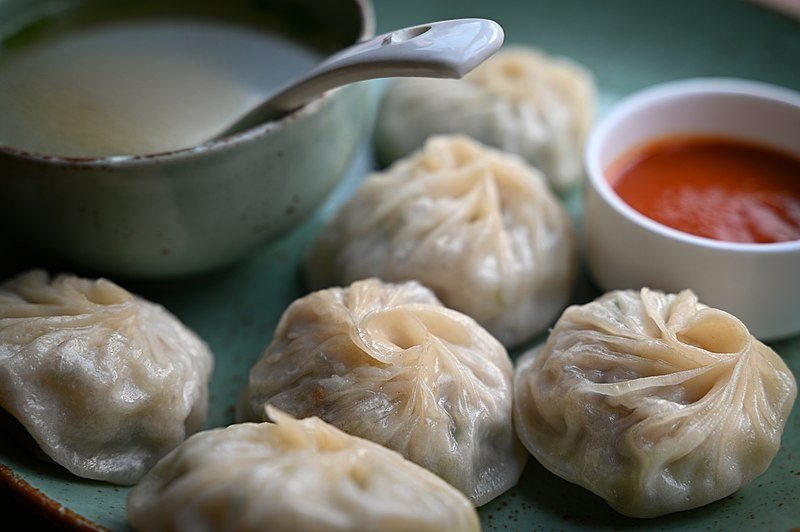
Screenshot of https://commons.wikimedia.org/wiki/File:Steamed_momos_-_Tibetan_cuisine.jpg Video by Hebbars Kitchen
















